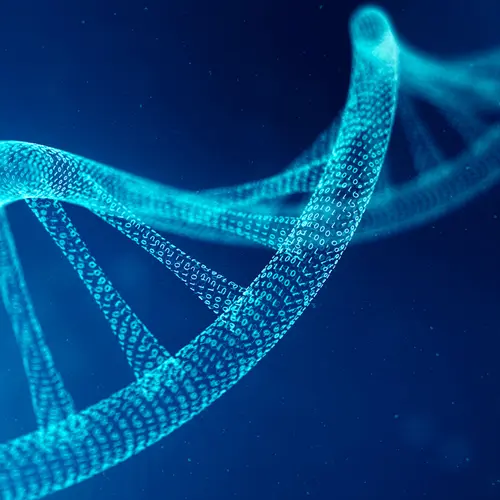What causes multiple myeloma? No one knows exactly, but certain things can raise your chances of getting this blood cancer.
Possible Causes of Multiple Myeloma
DNA tells our cells what to do. Researchers believe that changes in DNA (doctors call them mutations) make plasma cells turn cancerous. A mutation can:
- Turn on oncogenes, the genes that promote cell growth
- Turn off tumor suppressor genes, which slow down cell growth and make sure cells die at the right time
Scientists have also found other changes in cells of some people with myeloma:
- Parts of chromosome 17 are missing. This seems to make the myeloma more aggressive and harder to treat.
- Part of one chromosome has switched with part of another. Doctors call this translocation. When it happens next to an oncogene, it can turn the oncogene on.
- Bone marrow cells are abnormal, which may cause excess plasma cell growth (tumors).
RIsk Factors
Your age, race, and whether you have a family member with the disease all play a role. But just because you have one of these risks doesn't mean you'll get sick. And you can get multiple myeloma even without them.
Age. You're at a higher risk for multiple myeloma if you're over age 45. Most people who get this cancer are over age 65.
The reason isn't clear, but the chance of getting most types of cancer gets higher as you age. It may be because of changes in your genes during your life.
Race. If you're an African-American person, you have twice the risk of getting multiple myeloma than a white person. Researchers aren't sure why.
One possible reason is that African-American people have a higher chance of getting a blood disorder called MGUS (monoclonal gammopathy of undetermined significance). This condition raises your odds of having multiple myeloma. African-American people may also be more likely than white people to get multiple myeloma if they already have MGUS.
If you're an African-American person, your odds of having a protein in your body called pP-7 is higher, which is also linked with multiple myeloma risk.
Gender. Men are more likely than women to get multiple myeloma, but not by much. No one knows why.
Blood conditions. If you already have certain other blood disorders, you're at higher risk for multiple myeloma. MGUS is the main one.
Not everyone who has MGUS gets multiple myeloma. But everyone with multiple myeloma has MGUS before they get cancer.
Genes. Some genetic changes are linked with multiple myeloma. Genes are tiny strands in your body made up of DNA. They determine which features are passed on from your parents, like the color of your eyes. They're found on structures called chromosomes.
Some changes with genes and chromosomes are linked with multiple myeloma, including the number of chromosomes you have. About half of people with the disease are missing chromosome 13.
Also, for some people with the condition, parts of a chromosome may be in the wrong location.
Family history. If you have a parent, brother, or sister who has multiple myeloma, your odds of getting the disease may be higher. This is likely because of an inherited gene.
Obesity. Recently, scientists have found evidence that your odds of getting multiple myeloma go up if you had obesity as a child and as an adult.
No one knows why. It's possible that it has to do with how obesity affects how certain hormones behave and also with insulin resistance, which is when your body can't process sugar properly.
Researchers suspect that type 2 diabetes, which is closely linked to obesity, may also play a role.
Contact with chemicals. If you work in certain industries, like oil and agriculture, you have a higher risk of multiple myeloma. This may be because you're more likely to come into contact with certain hazardous chemicals.
Some studies show that benzene, which is found in gasoline, may be one of them. But one study found that while engine exhaust was connected with multiple myeloma, a chemical other than benzene was probably to blame.
Contact with pesticides and fertilizers may also raise your risk. One study found that Vietnam War veterans who were exposed to Agent Orange, the herbicide used to destroy plants in jungles, had a higher chance of having MGUS. Agent Orange contains a chemical called TCDD, which has been linked to various cancers.
Exposure to radiation. Some studies show that exposure to certain types of radiation can raise your risk for multiple myeloma. You may be at higher risk if you have worked at a facility that works with radioactive materials to produce energy or weapons. In one study of workers at the K-25 uranium enrichment facility (part of the Manhattan Project), those who swallowed or breathed in radioactive particles were 4% more likely to die of multiple myeloma.
Plasma cell diseases. If you have one of these two conditions that affect your plasma cells, you’re at higher risk of multiple myeloma:
- Monoclonal gammopathy of undetermined significance (MGUS). This means you have abnormal proteins called M proteins in your blood. It usually isn’t a problem, but sometimes it can lead to cancer.
- Solitary plasmacytoma. These tumors can form in your bones or in soft tissue nearby. Those in your bones are more likely to lead to multiple myeloma.

